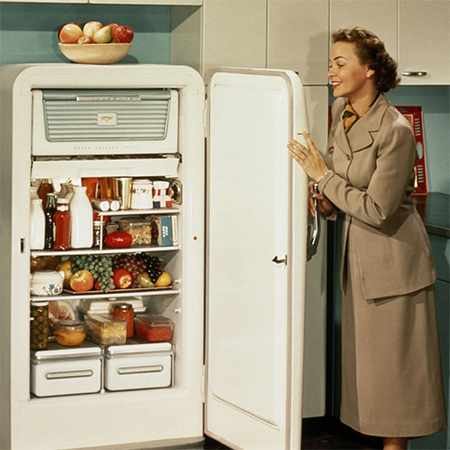Tips to Cut Your Electricity Bill
As the cost of power gets out of control, everyone needs a few tips on how to cut their electricity bill and to know what appliances use the most electricity.
08/04/2022
eskom
With the country now almost post-Covid and still reeling from the effects of this devastating pandemic, inflation controls the country as prices hike higher than ever and basic services such as electricity dig deeply into everyone's wallet. If you are savvy, you can cut the costs of your monthly electricity bill by knowing what appliances use the most electricity in a home.
good housekeeping
1. Upgrade to Energy-Efficient Appliances
If your home is fitted with appliances that are more than 10-years old, you are throwing money away every time you use them. Older appliances consume far more energy than modern, energy-efficient ones and some a vastly higher amount if they are older. Those old appliances that use more energy are an oven or hob, washing machine and tumble dryer and older model heaters. Replacing these appliances might cost you money upfront but will definitely bring you savings in the long run.
However, it’s essential to know that your appliances will only become energy-efficient if you’ll use it properly and wisely. For instance, you should run your washing machine, dishwasher, freezer, and refrigerator in full load to ensure maximum energy-efficiency. When it comes to cooking, it’s best to do it in a smart way. You can save more energy by using smaller cooking appliance like a crockpot or a toaster oven.
Lastly, you can make your appliances more energy-efficient by maintaining them. Keep them clean and in good working condition. This means checking the trap and removing the food particles from your dishwasher, cleaning the hoses in your dryer, and doing other essential maintenance tasks to your appliances.
2. Cut Down on Watts
In this country, appliances small and large
depend on 220-240V (Volt) electricity supply.
Any variation of this and sometimes incurred by
power outages and load shedding results in
damage to appliances. While the Voltage is
important, so is the Wattage or Watts consumed
by an appliance.
For those that don't know what Watt is,
appliances use a unit of electrical power to be
able to function properly and within their
limits. This unit of electrical power is known
as a Watt. Appliances small and large use a
certain number of Watts to work and the more
Watts they use - the more electricity they
consume and the more expensive to operate. Any
appliances that use heating or cooling
automatically have a higher Wattage than those
that don't, so items such as hairdryers,
heaters, air conditioners, etc., require far
more electricity - and even more so if they are
older models.
Let me give you a better example of how appliances have different wattages. Let's take a vacuum cleaner for example. Some vacuum cleaners run on less than 1000W while others can go upwards of 2000W. Obviously, the latter uses 1000 Watts more and, therefore, costs more to run. When you purchase a vacuum cleaner, you are going to select one that ticks all your boxes, but many tend to overlook how many Watts the appliance uses. If you only have a small home and perhaps have tiled or laminate floors, you don't need a vacuum cleaner that sucks energy more than it sucks dust. This is just an example of one appliance where you can start cutting back on how much electricity you use.
Another example put in simple terms is using an oven as opposed to a microwave. You know the Wattage of a microwave when you purchase it, it could be 800W, 950W or above. When you use an oven, on the other hand, you don't really know how many Watts it requires unless you take note when you purchase the oven. I took this even further by doing a bit of online research and discovered that most retail stores don't even know the Wattage of ovens that they sell. Let's just state that an electric oven can use anywhere between 2000 and 5000 Watts. Now, compare that to your microwave and you will soon realise that using a microwave uses far less electricity than an oven. Keep that in mind the next time you heat the oven to warm up a meal or use the oven grill to make toast!
Considering all these things, cutting down on the total watts consumed plays a crucial role in reducing your electricity bill. Generally, watts is the unit of power used to calculate a grid electricity consumer’s bill. This means you pay your electricity based on the total watts or wattage per hour times the rate of the electricity supplier.
So, the higher the wattage, the higher your electricity bills. This is especially true in you live in areas where electricity is regulated. Fortunately, in much of the USA, electricity is deregulated. For example, consumers in Connecticut can shop, and electric rates in CT are very competitive. As a result, you can save more money on your monthly electricity bills.
Did You Know?
Not only does a microwave use far less power than an oven, it also cooks faster.
3. Is Battery-Operated a Better Option?
For many, appliances that are battery-operated would seem to be the solution. The only problem with battery-operated is that the battery needs to be constantly charged via an electrical outlet or the batteries changed unless they are rechargeable. That means that ultimately, you might be using a battery-operated appliance, but it still requires electricity to operate. In actual fact, battery-operated appliances and tools use the exact same amount of electricity to be fully charged.
Did You Know?
When charging devices and appliances, remove them immediately from the charger once fully charged. If not, these continue to draw power.






